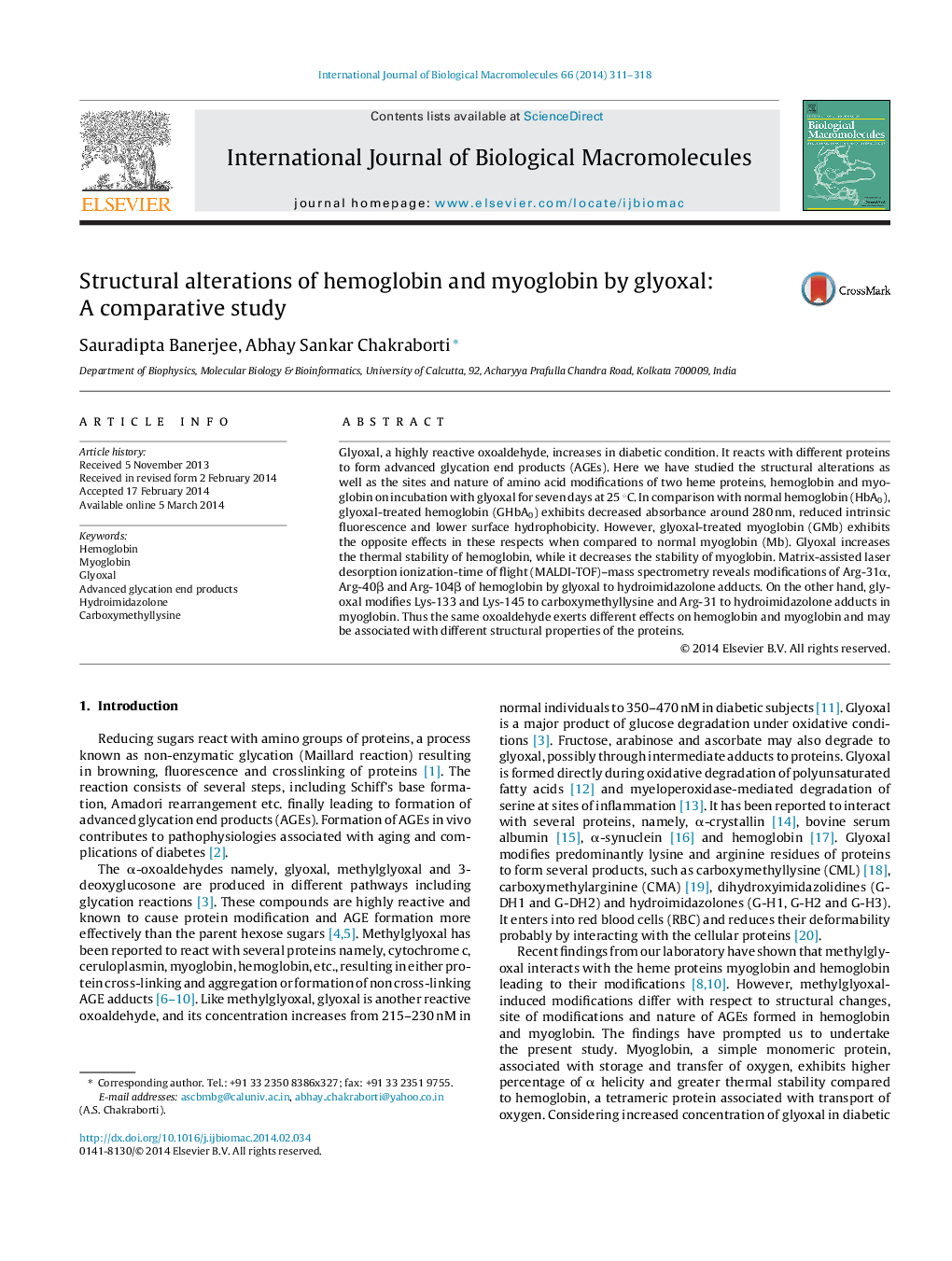| Article ID | Journal | Published Year | Pages | File Type |
|---|---|---|---|---|
| 1986861 | International Journal of Biological Macromolecules | 2014 | 8 Pages |
Abstract
Glyoxal, a highly reactive oxoaldehyde, increases in diabetic condition. It reacts with different proteins to form advanced glycation end products (AGEs). Here we have studied the structural alterations as well as the sites and nature of amino acid modifications of two heme proteins, hemoglobin and myoglobin on incubation with glyoxal for seven days at 25 °C. In comparison with normal hemoglobin (HbA0), glyoxal-treated hemoglobin (GHbA0) exhibits decreased absorbance around 280 nm, reduced intrinsic fluorescence and lower surface hydrophobicity. However, glyoxal-treated myoglobin (GMb) exhibits the opposite effects in these respects when compared to normal myoglobin (Mb). Glyoxal increases the thermal stability of hemoglobin, while it decreases the stability of myoglobin. Matrix-assisted laser desorption ionization-time of flight (MALDI-TOF)-mass spectrometry reveals modifications of Arg-31α, Arg-40β and Arg-104β of hemoglobin by glyoxal to hydroimidazolone adducts. On the other hand, glyoxal modifies Lys-133 and Lys-145 to carboxymethyllysine and Arg-31 to hydroimidazolone adducts in myoglobin. Thus the same oxoaldehyde exerts different effects on hemoglobin and myoglobin and may be associated with different structural properties of the proteins.
Keywords
Related Topics
Life Sciences
Biochemistry, Genetics and Molecular Biology
Biochemistry
Authors
Sauradipta Banerjee, Abhay Sankar Chakraborti,
